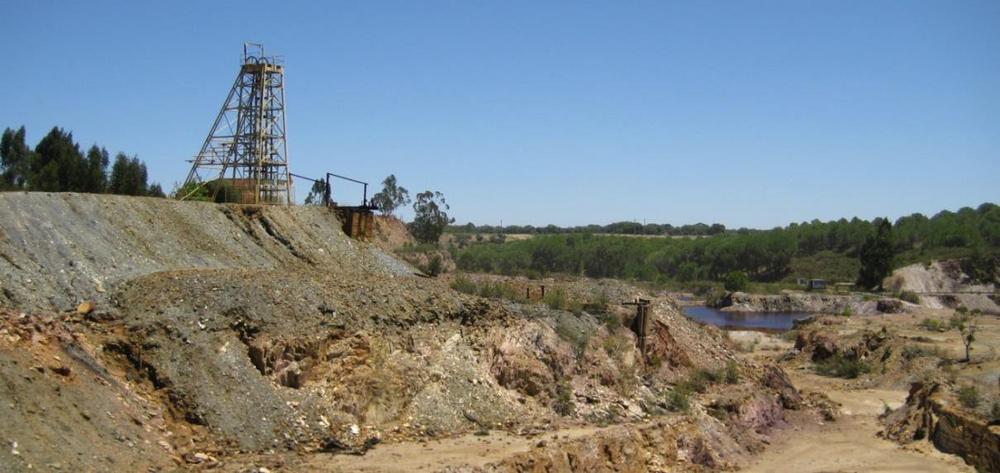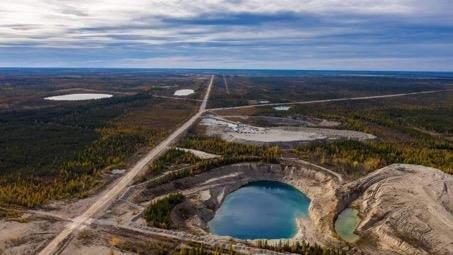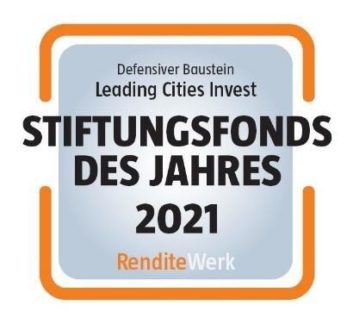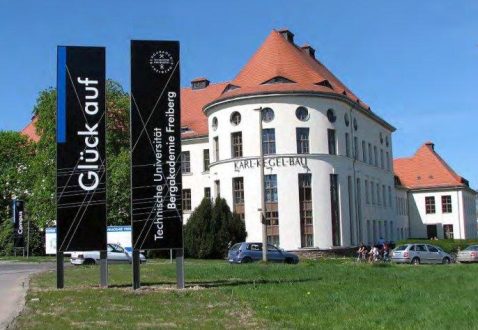
Avrupa Minerals Closing In On Copper/Zinc Targets
The results didn’t look so spectacular, as hole SES20-031 returned 10.75m @ 0.19% copper and 0.74% lead, and SES20-032 didn’t hit any massive mineralization, though samples from the target horizon have been sent to the lab for trace element, pathfinder geochemistry. My expectations were higher than this, as SES008 returned 5.0m @ 0.64% Cu, 36.8 g/t Ag, 0.94% Pb and 1.54% Zn, and SES028 intercepted the edge of a significant feeder zone beneath the 8 Lens. Management remains highly positive, as CEO Paul Kuhn acknowledges the complexity of the mineralized systems at Alvalade:
“We are excited about the immediate possibilities in the Sesmarias target area. Positive geochemical and geological results from SES20-031 indicate potential for a continuing strong VMS system. We are still in the early stages of work at the north end of the presently-known Sesmarias system. Already, with the completion of two drill holes, and the start of a third hole, we have a much-improved understanding of the structural
controls to the massive sulfide mineralization. This allows us to better target the massive sulfide bodies, as we move north along strike, and at some depth targeting downdip mineralization. The geological team has done a great job in pushing the Project ahead.”
The present work is the initial attempt to expand the mineralization to the north from SES008 to the Brejo target area (formerly Northern Deep target), and the third hole, currently underway, is located north of and close to SES008. The next target is the Brejo target area itself, representing the strong gravity anomaly indicated at the upper half of the figure. Management plans to test this target in the near future.
Drill testing this target will involve deep drilling, as wide-spaced, 500-600m deep historic drilling suggests strong possibility of massive sulfide mineralization increasing at depth.
This section also indicates a sub-vertical orientation of potential mineralization. A more detailed section of intercepted geology by hole SES20-031 seems to indicate a more vertical orientation of mineralization as well, and is the explanation why not much mineralization was intersected.
“SES20-031 continued to 536 meters depth, in several places intersecting the specific black shale unit that hosts massive sulfide mineralization at Sesmarias and at the Lousal Mine, located six kilometers to the north. Detailed review of the core showed that for its entire length, the drill hole passed through intensely folded rock units of the Volcano-Sedimentary Formation, the general host of mineralization throughout the Iberian Pyrite Belt. Overall, however, the drillhole roughly paralleled the major trend of bedding, allowing only for narrow true widths of mineralized intercepts.”
The beautifully visualized section showed the trajectory of the drill, but I still wondered how the drilling company could draw conclusions about the heavily folded, vertically oriented structures, as these were basically missed. According to Kuhn: “When we detail log the core material, we can easily see the angle of the bedding relative to the axis of the core. Since we orient the core as it comes out of the hole, we can tell the geological angle of the beds. We are able to see detailed changes in the bedding and can easily interpret small to large folds. Faults are easy to see in the core material. With this work we can paint a complicated picture of the geology. Even folding in short intervals of core can mimic the larger-scale folding in the beds of target horizons. Previously, we understood that the target zones were strongly folded and faulted, but the detail of recent review by the JV geological team has advanced the story further, which is heavily influencing our targeting and expectations.”
It was interesting to read that the drill hole intercepted the black shale rocks that host massive sulfide mineralization not only at Sesmarias, but also at the nearby Lousal Mine. I wondered what percentage of the Lousal Mine mineralization is hosted in black shale rocks.
Kuhn thinks, based on historical analysis, that this is almost universal, indicating they might have found extensions of the Lousal deposit. The third hole currently underway, SES20-033 is testing exactly the black shale trajectory, at about 350-400 meters depth, but also on the other side of the major fold, in the neighborhood of 650-800 meters depth.
Besides this more or less greenfields drilling, much of interest to me is the following paragraph in the news release:
“At the same time, the geological team continues to assess the historical core in the Brejo area, and has started to map geological structures visible in the old Lousal Mine workings. Initial work there clearly shows similarity of ore control characteristics to what we now know about the Sesmarias massive sulfide mineralization. Historical documents and academic studies (non- compliant to NI 43-101 standards) indicate a universal metal resource at the old mine of over 50 million tonnes of massive sulfide material. Review of original mine records by Avrupa demonstrates that less than 20 million tonnes of ore were actually extracted from Lousal.”
As has been known for years, there could still be 30Mt of massive sulfide mineralization present at the Lousal Mine. This resembles low hanging fruit to me, as I indicated in earlier analysis, and I’m curious if management is for example contemplating digitizing historic data and results of ongoing mapping, in order to develop a drilling strategy to prove up these potential 30Mt. I’m also wondering where Lousal stands on the priority list of MATSA, as it seems relatively low risk. CEO Kuhn answered: “Work at and around the Lousal Mine is a high priority, after Sesmarias/Brejo and the stockwork discovery at Monte da Bela Vista, just north of the Lousal Mine. At the moment we are running at full speed at Semarias/Brejo, but plan to work at Lousal compilation in the coming months.”
As Kuhn indicated in December 2021 that a helicopter-supported VTEM electromagnetic survey was about to commence that month, covering a large part of the Alvalade License, I am curious about when the results will be announced. According to him, results are expected during the first half of March.
In the meantime, the metals Avrupa is focusing on, copper and zinc, have been going through the roof, especially copper. After rising to US$4.34/lb Cu, levels not seen in nine years, there has been heavy selling on February 26, 2021, bringing the price down to US$4.09/lb Cu for now as can be seen in this chart by Macrotrends.
Analysts see this selling as an overdue and healthy stage of consolidation at best, or a correction at worst, according to this article at Mining.com. The big question for now is the reaction of big Chinese players, holding massive long positions in copper contracts. As lots of copper is projected to be arriving from Chile and Peru, it is expected that the extreme pressure on the copper price caused by heavy shortages, in turn caused by strikes and COVID-19, will ease somewhat. On the other hand, when COVID-19 measures will gradually subside on the back of vaccination, the world economy will gather speed again, and if this happens viciously as many analysts expect, also helped by the US$1.9T stimulus program from Biden, copper could remain around the US$4/lb levels for quite some time.
Avrupa’s second most important metal, zinc, has also been doing well lately, as can be seen here in this chart of Kitco.
As a reminder, according to the International Lead and Zinc Study Group (ILZSG), a platform formed by the United Nations, consisting of all major producing countries and industry players in the lead and zinc sector, several mines could experience problems to nameplate capacity again, but global supply for refined zinc metal will exceed demand significantly in 2021, as this surplus is expected to be 463kt. Notwithstanding this, with the world economy picking up, I expect zinc to remain above US$1.15-1.20/lb levels for the foreseeable future. Zinc currently sits at US1.27/lb Zn.
Such metal prices should be all the incentive JV partner MATSA needs in my view, to sink a lot of exploration dollars (or euro’s in this case) into Alvalade. After the 4 to 1 consolidation of Avrupa shares, the company is looking to do a financing soon, as several funds already expressed their interest. Avrupa is still trading at rock-bottom prices (market cap of just C$3.76M), despite copper prices going into the stratosphere.
When Avrupa starts hitting serious mineralization, these price levels should be something from the past soon in my view.
Conclusion
The first drill holes didn’t bring in fireworks yet, but as the geology is quite complex and not easy to unravel, CEO Paul Kuhn is working diligently together with JV Partner MATSA to unravel the Sesmarias puzzle. The soon to be announced results of the airborne VTEM survey will hopefully and likely bring in lots of targets, as can be expected with several historic mines and remaining historic resources being present.. Besides all other targets, in my view, the remaining historic resources sitting in the ground at the Lousal Mine provide a unique opportunity to relatively easily prove up many tons of mineralization, and drilling on this location is planned for later in 2021. When good intercepts start rolling in there, this tiny junior could very well become a multi-bagger in a short period of time.
I hope you will find this article interesting and useful, and will have further interest in my upcoming articles on mining. To never miss a thing, please subscribe to my free newsletter on my website www.criticalinvestor.eu, in order to get an email notice of my new articles soon after they are published.
Disclaimer: The author is not a registered investment advisor, and currently has a long position in this stock. Avrupa Minerals is a sponsoring company. All facts are to be checked by the reader. For more information go to www.avrupaminerals.com and read the company’s profile and official documents on www.sedar.com, also for important risk disclosures. This article is provided for information purposes only, and is not intended to be investment advice of any kind, and all readers are encouraged to do their own due diligence, and talk to their own licensed investment advisors prior to making any investment decisions.
Swiss Resource Capital AG
Poststrasse 1
CH9100 Herisau
Telefon: +41 (71) 354-8501
Telefax: +41 (71) 560-4271
http://www.resource-capital.ch
CEO
Telefon: +41 (71) 3548501
E-Mail: js@resource-capital.ch
![]()




